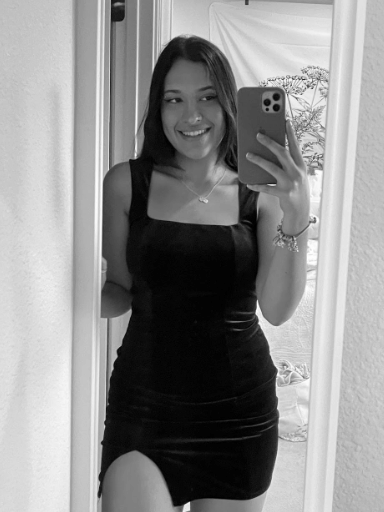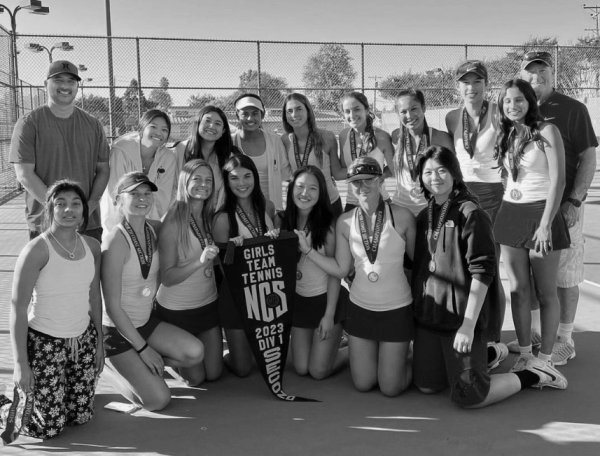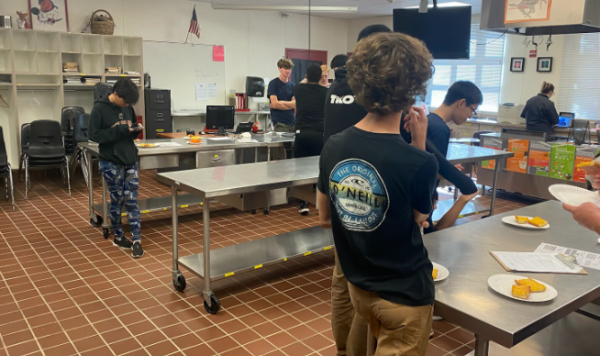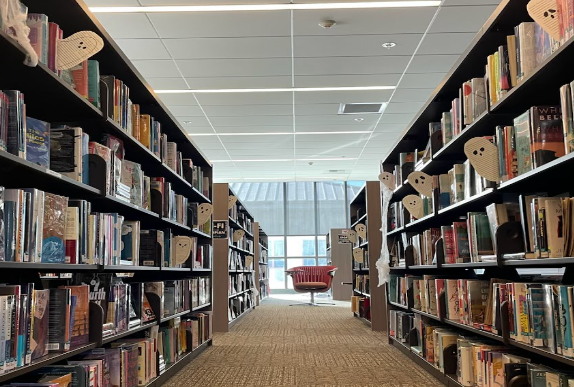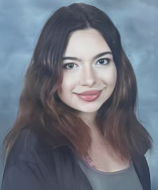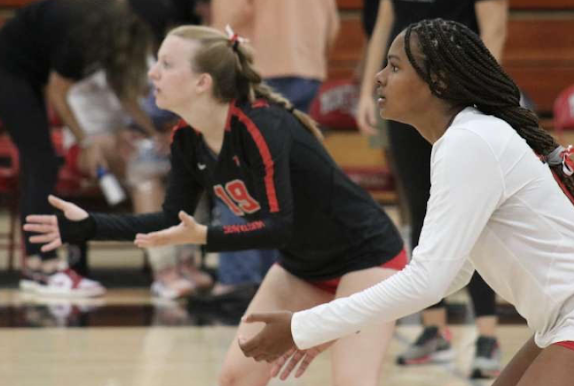Women’s Lit: A New Perspective
May 15, 2015
“So… you’re a feminist?”
*Asked with a long pause before uttering the “f” word*
“And… isn’t that class full of feminists?”
Well yes… and no.
Empowering, inspiring, eye-opening, magnificent, and spicy. What type of class could consist of all of those adjectives?
Taught by English teacher Kimberley Gilles and consisting of only 20 senior girls, Women’s Literature at Monte Vista is a class like no other.
“[Women’s Lit] is a diverse class for which a comforting and expressive environment is formed, “ senior Lauren Lambertson said. “As the year goes on, [we have] been able to feel like we can speak our mind about anything, and be heard.”
Focusing on the themes of race, class and gender as experienced by women, Women’s Lit aims to study major trends in women’s history as well as women’s involvement in the world. The textbook definition of “Women’s Literature” doesn’t do it justice; because the class itself has grown into so much more than a “class”.
“Women’s Lit has provided me with a space to hone my critical consciousness,” senior Isabella Ordaz said.
Students have stepped into what it is like to be an immigrant, in a land that does not welcome you. They have made masterpieces with Virginia Woolf’s scattered thoughts, and have cried beside an African American woman who longs for her sister and freedom.
Students have studied how women are depicted in the media. They have travelled across continents to understand what it’s like to be a child bride. They have walked in the footsteps of the revolutionaries of the 1970’s Women’s Art Movement, and have learned what it means to be a feminist.
“I learned the true meaning of feminism and what it is trying to accomplish: equality for all,” senior Lauren Worley said. “I have become more aware of the barriers and injustices that women in our society face.”
It all starts on Tuesdays
“Each Monday for homework we give out articles to the class,” senior Agustina Perez Blua said. “[The next day] one of our classmates teaches the [topic] to class. It is always extremely interesting to see what each person comes up with to do.”
The topics can range from women in the household, to women behaving badly. Throughout the year, the students have accumulated over 350 pages of non-fiction articles that analyze different topics relating with women, race, and class. They have amassed the articles in their prized “readers” that serve as their conventional class textbook.
“The intellectual freedom my students exercise means that they present me with information and connections I’ve never made before. Learning WITH [them], not just watching [them] learn, has been a revelation for me,” Ms. Gilles said. “Discovering that [they] knew of the author of Americanah, Chimamanda Ngozi Achibie, from a Beyonce song was a wonderful moment!”
Along with annotating and discussing the articles, classmates come up with essay prompts that are assigned and due the next day, challenging one another to critically analyze the articles and put their ideas into (usually) a formal essay.
“My writing has improved greatly throughout the year,” Caroline Carey said. “[These skills] will help me in college.”
As seen through the eyes of the Women’s Lit students, Women’s Lit is highly important and is something the students look forward to every day. People looking from the outside – in, have trouble understanding the class, therefore misconceptions and exaggerations have lingered in the halls.
Misconception #1: All students in Women’s Lit consider themselves feminists.
Does Women’s Lit incompass feminism? Yes, of course. But the students explain that when entering the class, most did not understand the term, or they did not understand the controversy surrounding it.
“Originally not understanding feminism, I now have a better understanding of the word in that it doesn’t mean man-hater. It means human lover,” Sam Dela Rosa said.
Women’s Lit studied the formation of feminism, looking at the rise of the women’s movement in late 1800s, to the evolution of radical feminism. With open minds, the students were able to analyze and eventually understand the need for these prominent movements, understanding that these events shaped women’s roles in society today.
“Women’s Lit has shown me a lot about the world around me,” Caroline Carey said. “I have learned about the injustices faced by women around the world.”
Misconception #2: Women’s Lit is only for women.
As self-proclaimed feminist Emma Watson has shown in the past year, women’s issues are not just their own.
“How can we affect change in the world when only half of it is invited or feel welcome to participate in the conversation? Men- Gender equality is your issue too,” Emma Watson said at the UN, launching the HeforShe campaign.
Although Women’s Lit currently contains all female students, the class is more than excited to invite men into the class as well.
Because the word “women” is in the class title, some can tend to only believe that Women’s Lit just focuses on women and their struggles throughout history. Rather, Women’s Lit incompasses many topics that gender bleeds into.
“We focus on gender as ONE of the ways people understand themselves and one another,” Ms. Gilles said. “In the process, we end up dealing with the intersections of class, race, socio-economics, history, popular culture and current events.”
The students have also been actively recruiting Monte Vista junior boys to sign up for the class next year. The have been successful, noting that two boys have committed to participating the class.
Misconception #3: Women’s Lit is a place to complain and dictate firm beliefs.
“Women’s Lit is a class where your ideas are accepted and respected,” Anna Nunes said. “It’s safe to express what you believe in here.”
Women’s Lit is much more than learning just about women, it is more about understanding one another and one’s place in the world.
“Women’s Lit has taught me to be proud of being a woman,” Emily Romero said. [I have learned] to never let the stereotypes confine me, that I can do anything I want and work for, no matter what others say about my race, sex, religion, or status.”
Throughout the year, the students have been able to find their voices, and actively use them. Women’s Lit has an inviting atmosphere, and no one in the class feels left out. The discussions range from going over a chapter in the current book they are analyzing, to controversial topics in society today. Although not everyone will agree with one another, the students have shown to be respectful, and openly thoughtful of different opinions.
“My goal was to share the voices of wise and provocative women with my students,” Ms. Gilles said. “I hoped to accomplish this by creating a classroom community that fostered curiosity, authenticity, intellectual skepticism, and joy. I wanted my students to discover their voices — as speakers and writers.”
At the end of the day, they’re just a big, happy family.
Through daily 53-minute periods, lessons that teach about life, and even after school book discussions, the Women’s Lit students have grown extremely close, all through opening themselves up to new ideas and horizons.
“ It took bravery for you to let your classmates see that your intellectual lives and your emotional lives are inextricably linked,” Ms. Gilles said. As you stood in front of one another — obviously nervous, excited, and vulnerable — you knew that the only humane response was full engagement and reciprocity.”
As a student in Women’s Lit myself, the most profound aspect of the class is the willingness everyone posses, and the vulnerability. We have all witnessed each other at the best of our times, and the worst of our times, and there has been no judgement. Being in a space with tremendous support and respect not only bolsters one’s confidence, but has given me only more desire to learn.
“We have laughed and cried and gasped and wondered in one another’s’ presence. We even manage to work in a lot of food! Isn’t that what family does?” Ms. Gilles said.
“Women’s Lit is like a family,” Julianna Ceccarelli said “I have never been so close to so many people all in one class.”






